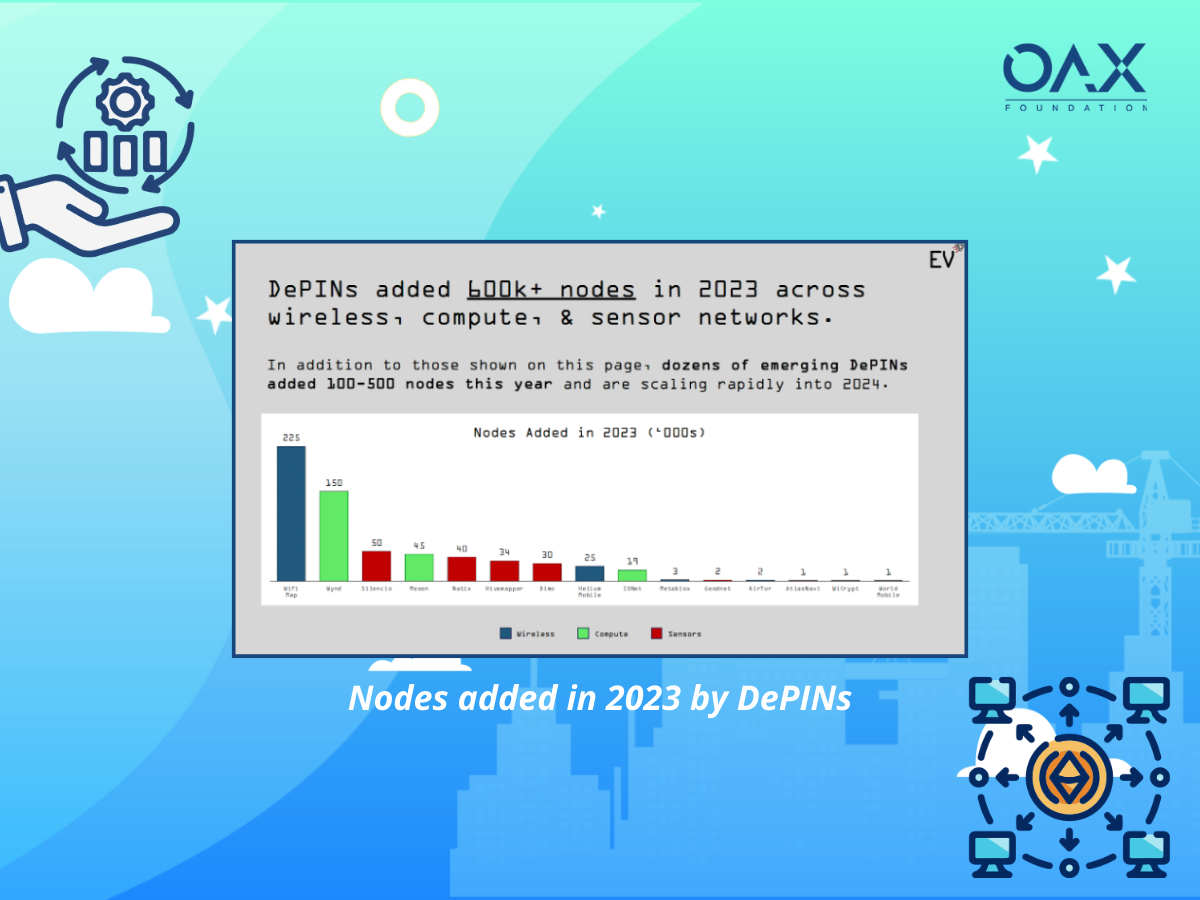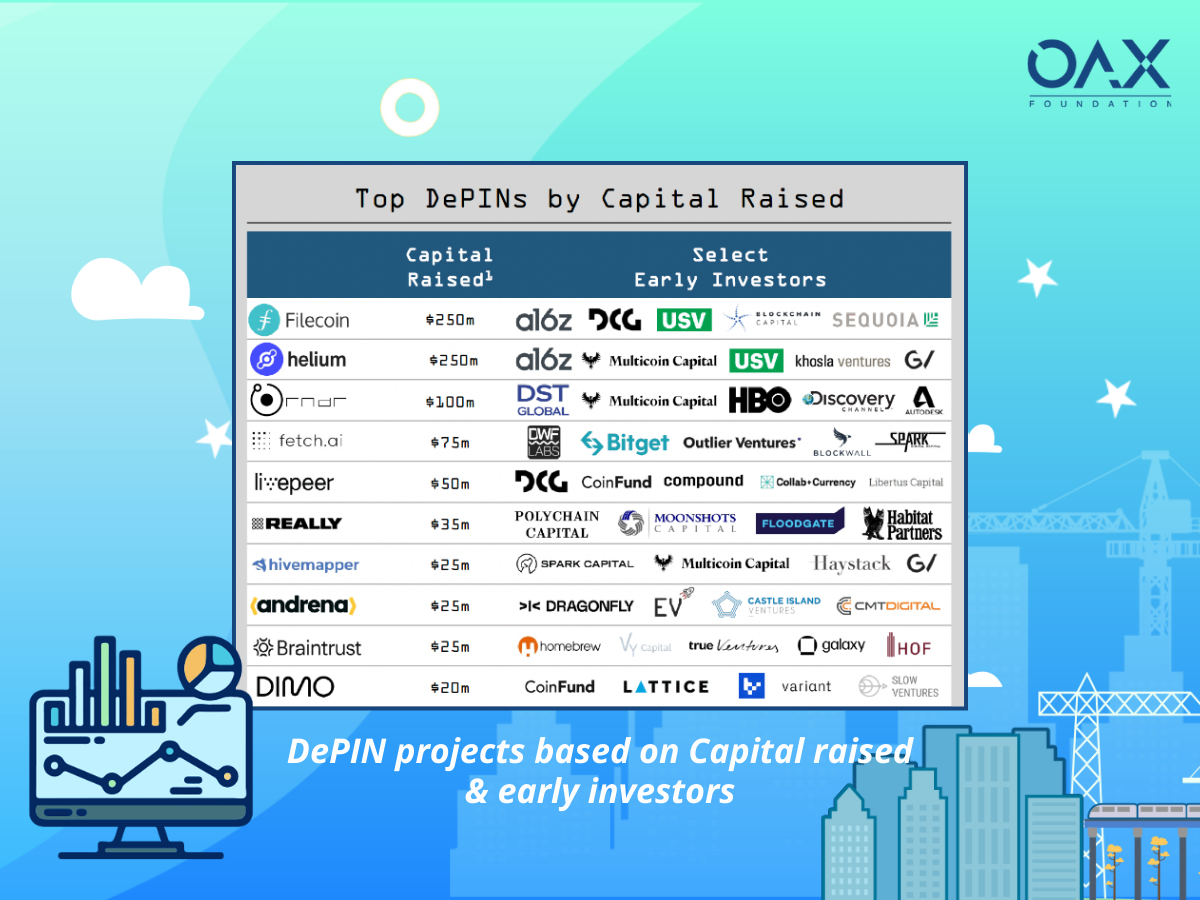
The largest sector in 2024: DePIN
Revolutionizing Physical Infrastructure with Blockchain
The DePIN sector, which stands for Decentralized Physical Infrastructure Networks, is capturing attention and gaining momentum in 2024. In just the past six months, its market cap has surged from $10 billion to an impressive $25 billion. What makes DePIN so compelling? It’s all about incentivizing the production of valuable resources like data storage, mobile data, and computing power. With nearly 1,000 companies now operating in this space, a significant leap from just 25 a few years ago, entrepreneurs and investors are betting on DePIN networks to potentially pave the way for the emergence of digital commodity-backed currencies in the coming decades.
What exactly is DePIN?
Imagine a world where physical infrastructure networks are powered by blockchain technology, creating a decentralized ecosystem of sensors, wireless infrastructure, energy grids, and more. Welcome to the world of DePIN.
Traditionally, the establishment and operation of physical infrastructure networks have been the domain of large corporations or governments with substantial resources. However, DePIN changes the game by allowing individuals to participate and contribute to these networks using their own hardware or specialized devices designed for the network’s specific purpose.
But how does it work? DePIN leverages cryptocurrency rewards to incentivize and motivate individuals to participate actively in the physical infrastructure networks. This innovative approach enables these networks to be built from the ground up, bypassing the traditional top-down approach. Whether it’s contributing hard drives, wireless network nodes, or in-car tracking devices, individuals play a crucial role in the DePIN ecosystem. By actively participating, they help bootstrap and maintain real-world services, all while being rewarded with cryptocurrency tokens for their contributions.

Examples of DePIN projects
Filecoin, a DePIN pioneer, revolutionizes decentralized storage networks. It builds on IPFS, a distributed file system that stores copies of files in multiple locations. Filecoin adds incentives by rewarding individuals who provide spare hard drive storage with Filecoin tokens. This approach ensures constant accessibility to digital assets and data, regardless of server status or location. Multiple copies safeguard the integrity of assets, making tampering impractical. Retrieving data from the nearest nodes enhances efficiency, reducing the time and resources needed to access digital content.
Helium is yet another practical example of DePIN in action. It aims to create a decentralized wireless network specifically designed for the Internet of Things (IoT). Helium relies on a distributed network of hotspots provided by individuals who are rewarded for offering wireless coverage. These hotspots enable connected devices to communicate with each other, facilitating the growth of the IoT ecosystem in a decentralized manner.
Render takes the concept of DePIN to the realm of GPU rendering. It is a decentralized platform where users can harness the unused power of their PC graphics cards to render motion graphics and visual effects. By connecting their devices to the Render network, individuals can contribute their GPU resources, effectively forming a distributed rendering infrastructure. In return, they receive rewards in the form of cryptocurrency tokens, making their idle computing power a valuable asset within the decentralized rendering ecosystem.

Outlook in 2024
Looking ahead, the future of DePIN holds great potential in enhancing the robustness and accessibility of hardware-based networks. Through the implementation of incentivization and reward systems, DePIN can facilitate the efficient allocation of resources, enabling the establishment of new hardware networks without relying on centralized entities. Nonetheless, there are still obstacles to overcome. Regulatory scrutiny is yet to be fully addressed, particularly in cases where decentralized file storage services may inadvertently host illicit content.
From the perspective of the OAX Foundation, we are delighted to witness the industry’s growing recognition of DePIN, a model that has been around for years, much like Filecoin. However, it is only until last year that this category has emerged and gained significant visibility in mainstream media. This increased attention is due to its rapid growth as well as the relatability to our day-to-day lives, with examples such as WiFi infrastructure and gaming use cases. In contrast, categories like DeFi would seem more challenging for the general public to comprehend.
This exciting development positions DePIN as a promising avenue for widespread adoption, with its inherent value clear to see. It has the potential to reshape the digital asset landscape, making it all the more important for us at the OAX Foundation to provide industry insights. We are committed to keeping you at the forefront of the industry, equipping you with the knowledge and tools to navigate the ever-evolving world of Web3.
Disclaimer: The above is an opinion piece written by an authorized author, but in no way represents the official standpoint of OAX Foundation Limited, nor should it be meant to serve as investment advice.


